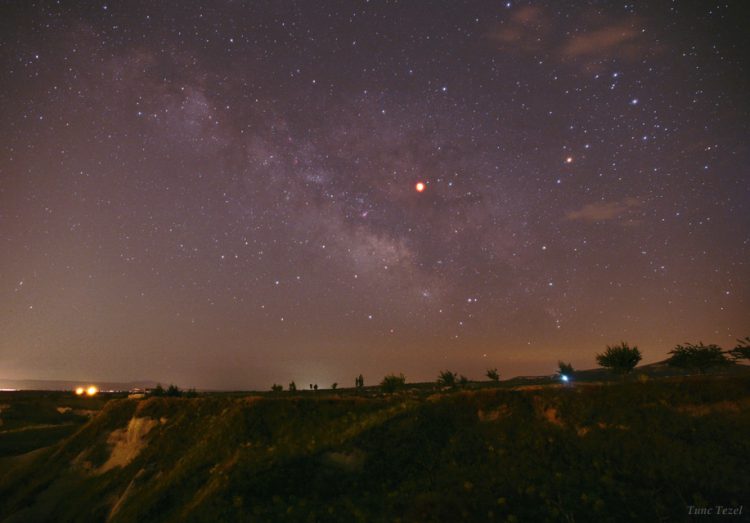The Red Moon of Goreme
Description
The total lunar eclipse of 15 June 2011 was one of the longest and darkest eclipses in more than a decade. To photograph this exceptional eclipse, TWAN photographer in Turkey escaped from cloud cover in the west and drove 650 km eastward in a race with clouds to reach Göreme in the heart of Cappadocia. As added by the photographer “The sky was clear there despite the meaning of the town, which can be translated to ‘You-shall-not-see!’ Göreme is sitting in the center of Göreme National Park; a UNESCO World Heritage Site generally known as Cappadocia. This eclipse was really dark. I guess the central Danjon scale was less than 1, ingress edge 2 and egress edge 2.5. It was really beautiful looking against the Milky Way.” Click on the second photo to see the photographer’s telescopic image of the eclipsed Moon. The Moon does not completely disappear as it passes through the Earth shadow because of the refraction of sunlight by the Earth’s atmosphere into the shadow cone; if the Earth had no atmosphere, the Moon would be completely dark during an eclipse. Earth blocks the direct light from the sun but some indirect light passing through Earth’s atmosphere still manages to reach the Moon. Since dust and gases in Earth’s atmosphere filter blue wavelengths from sunlight, the remaining light is reddened. The Moon appears to change from brilliant silver to between bright orange and dark red during a lunar eclipse.


comments (1)
ony redmoon
June 20, 2011 at 7:20 pm